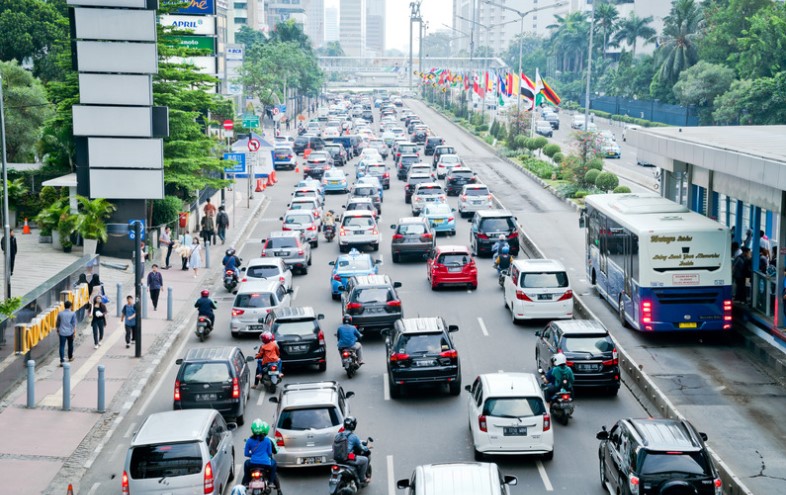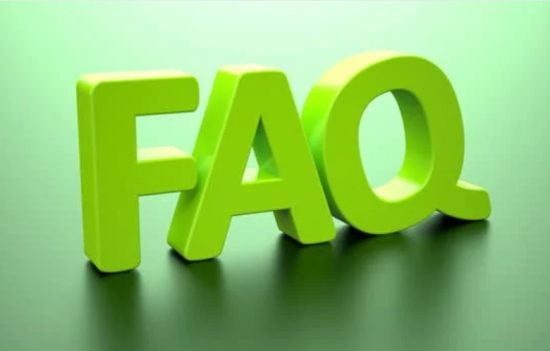Welcome to the thrilling world of Ontario’s highways! As you embark on your journey through the bustling roads, you must familiarize yourself with the rules and regulations governing your every move. And at the heart of it, all lies the mighty Highway Traffic Act – a comprehensive guidebook designed to ensure safety and order on our roads.
Whether you’re a seasoned driver or just starting out, understanding the Highway Traffic Act is crucial for avoiding fines, penalties, and potentially hazardous situations. So buckle up and join us as we delve into Ontario’s fascinating realm of traffic laws. From when law enforcement can pull you over to minor infractions versus major offences – we’ve got everything covered!
So let’s hit the road (figuratively speaking) as we explore what is lurking within Ontario’s Highway Traffic Act. Are you ready? Let’s go!
What is the Highway Traffic Act?

The Highway Traffic Act, also known as the HTA, is an extensive legislation governing all aspects of road use in Ontario. It serves as a roadmap for drivers and law enforcement regarding traffic regulations and safety measures.
This act covers a wide range of topics, from speed limits and right-of-way rules to vehicle equipment requirements and licensing provisions. It outlines the do’s and don’ts of operating a motor vehicle on Ontario’s roads.
One crucial aspect to note about the Highway Traffic Act is that it applies not only to car drivers but also extends its reach to cyclists, pedestrians, commercial vehicles, motorcycles – essentially anyone using the roadways. Its primary goal is ensuring public safety by establishing guidelines for responsible driving behaviour.
When is Law Enforcement Authorized to Pull You Over?
Law enforcement officers in Ontario are authorized to pull you over when they have reasonable grounds to believe that you have committed a traffic offence or pose a risk to public safety. This authority is granted under Ontario’s Highway Traffic Act (HTA).
Reasonable grounds can include observed violations such as speeding, running a red light, or reckless driving. It can also include equipment violations like broken tail lights or expired license plates. In addition, officers may pull you over for random spot checks and road safety initiatives.
Once pulled over, the officer has the right to request your driver’s license, proof of insurance, and vehicle registration documents. They may also conduct further investigations if they suspect impaired driving or other criminal activities.
It’s important to note that if an officer pulls you over without reasonable grounds, any evidence obtained during the stop may be deemed inadmissible in court. However, it is always advisable to comply with law enforcement directives and cooperate during routine stops for everyone’s safety on the road.
Remember, being aware of your rights and responsibilities under the HTA can help ensure a smooth interaction with law enforcement officers while maintaining road safety standards.
What Are the Charges Under the Highway Traffic Act?

The Highway Traffic Act in Ontario outlines various charges that can be imposed on drivers who violate traffic laws. These charges are meant to ensure the safety and orderliness of our roads.
One common charge under the Highway Traffic Act is speeding. If you exceed the posted speed limit, you may face fines, demerit points, or even license suspension, depending on how fast you are going.
Another charge is careless driving, which involves operating a vehicle without due care and attention. This can include actions such as texting while driving or swerving in and out of lanes without signalling.
Driving under the influence of alcohol or drugs is also a serious offence under the act. If you are found to have a blood alcohol concentration above 0.08% or impaired by drugs, you can face significant penalties, including license suspension and potential criminal charges.
Other charges include:
- Disobeying traffic signals
- Failing to yield the right-of-way
- Improper passing
- Driving with expired or invalid licenses or plates
It’s important to note that each charge carries its own set of penalties ranging from fines to license suspensions. The severity of these penalties depends on factors such as prior convictions and the nature of the offence committed.
In order to avoid these charges and their consequences, it’s crucial for drivers to familiarize themselves with the rules outlined in the Highway Traffic Act and always prioritize safe driving practices.
Is the Highway Traffic Act Federal or Provincial?
The Highway Traffic Act in Ontario is a provincial legislation that governs the rules and regulations of road safety. It is not a federal law, meaning it only applies within the jurisdiction of Ontario. This act outlines various traffic offences and penalties that law enforcement officers can enforce.
The act gives authority to police officers, provincial constables, and other designated individuals to pull over drivers who are suspected of violating traffic laws. They have the power to stop vehicles on public roads and request identification from drivers.
Under the Highway Traffic Act, there are several charges that can be issued for different infractions. These include speeding, careless driving, impaired driving, disobeying traffic signals or signs, and many others. The severity of these charges depends on the nature of the offence committed.
It’s important to note that fines for minor violations under this act can vary depending on the specific offence committed. These fines typically range from $60 to $500 but may increase if additional factors are involved or if it’s a repeat offence.
For major infractions such as excessive speeding or impaired driving, more serious consequences can be imposed, including license suspensions, vehicle impoundment, higher fines, and even imprisonment in some cases.
What Are Considered Minor Ontario Highway Traffic Act Fines?

Minor traffic violations under the Ontario Highway Traffic Act may seem insignificant, but they can still result in fines and penalties. These infractions are considered less serious than major offences but should not be taken lightly.
Examples of minor traffic violations include:
- Exceeding the speed limit by a small margin
- Failing to signal when changing lanes or turning
- Disobeying a stop sign or red light
- Improper use of high-beam headlights
If you are caught committing any of these offences, you may face fines ranging from $100 to $400.
It’s important to note that accumulating multiple minor traffic violations can have consequences beyond just paying fines. Your insurance premiums may increase, and your driving record could be negatively affected. Moreover, if you accumulate too many demerit points within a specific timeframe due to these minor offences, your driver’s license could even be suspended.
To avoid such consequences and ensure road safety for yourself and others around you, it is crucial to follow all traffic laws at all times. Speed limits should always be respected; signals must be used appropriately; stop signs and red lights must never be ignored.
What is Considered a Major Infraction on Ontario Highways?
A major infraction on Ontario highways refers to a serious violation of the rules and regulations outlined in the Highway Traffic Act. These infractions are considered more severe than minor offences and can have significant consequences for drivers.
One example of a major infraction is driving under the influence of alcohol or drugs. This not only endangers your own life but also poses a serious risk to other road users. Law enforcement takes these cases very seriously, and penalties can include hefty fines, license suspension, mandatory education programs, and even criminal charges.
Conclusion
The Highway Traffic Act in Ontario is a comprehensive piece of legislation that governs the rules and regulations for driving on our roads. It outlines the various charges, fines, and penalties that can be imposed if you violate these laws. Law enforcement officers are authorized to pull you over if they have reasonable grounds to believe that you have committed an offence under the Act.
So understanding and abiding by Ontario’s Highway Traffic Act is essential for safe and legal driving in this province. Always remember: obeying traffic laws protects yourself and ensures everyone’s well-being on our roads!
FAQ – What is the Highway Traffic Act in Ontario?
1. What is the Highway Traffic Act unsafe vehicle in Ontario?
What is considered an unsafe vehicle under the Highway Traffic Act in Ontario? This is an important question for drivers to understand, as it directly impacts their safety on the road. The Act defines an unsafe vehicle as one that poses a risk to its occupants, other road users, or property.
There are several factors that can contribute to a vehicle being deemed unsafe. These include mechanical defects such as faulty brakes, worn-out tires, or malfunctioning lights. Vehicles with excessive rust or damage may also be classified as unsafe.
To ensure compliance with the Act’s regulations and prevent accidents caused by unsafe vehicles, law enforcement officers have the authority to pull over drivers if they suspect their vehicle poses a danger. If pulled over for this reason, drivers may face penalties such as fines or even having their license suspended until repairs are made.
2. What is Highway Traffic Act Ontario Section 142?
Highway Traffic Act Ontario Section 142 addresses the issue of unsafe vehicles on the road. It states that no person shall operate or permit the operation of a vehicle on a highway if it is in such a condition that it may endanger anyone’s life, safety, or property.
This section covers various aspects of vehicular safety, including brakes, tires, lights, mirrors, and other essential components. It emphasizes the importance of maintaining vehicles in proper working order to ensure the safety of everyone on Ontario highways.
In cases where an officer believes a vehicle poses a risk to public safety due to its condition or equipment failure, they have the authority under Section 142 to pull over and inspect the vehicle. If found unsafe, appropriate measures will be taken by law enforcement.
3. What is Ontario Highway Traffic Act 78.1 1?
Ontario Highway Traffic Act 78.1(1) is a specific section within the broader legislation that addresses various traffic violations and offences in Ontario, Canada. This particular section deals with the use of handheld devices while driving.
According to this provision, it is illegal for any individual to operate a motor vehicle on a highway while holding or using a handheld communication device. In simpler terms, it means you cannot use your cell phone or any other electronic device that requires you to hold or manipulate it while driving.
This law aims to promote road safety by minimizing distractions caused by mobile phones and similar devices. Distracted driving has been identified as one of the leading causes of accidents on Ontario highways, resulting in injuries and fatalities.
4. What is Section 134 of the Highway Traffic Act Ontario?
The Highway Traffic Act in Ontario is a crucial piece of legislation that governs traffic rules and regulations on the province’s roads. It empowers law enforcement officers to pull over vehicles under certain circumstances and outlines various charges for traffic violations.
One particular section of the Highway Traffic Act that drivers should be aware of is Section 134. This section pertains to unsafe operation techniques while passing another vehicle on a highway. It lays out specific guidelines on how drivers should safely pass other vehicles without endangering themselves or others on the road.











